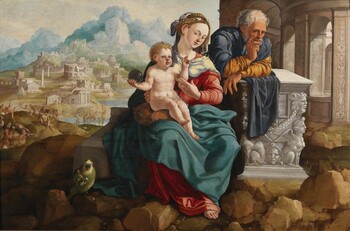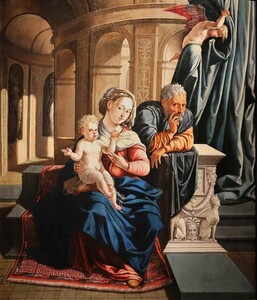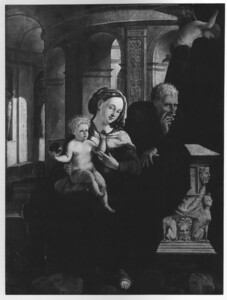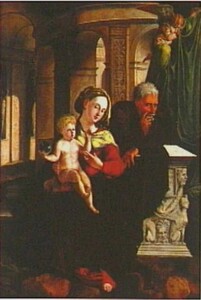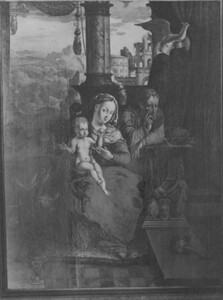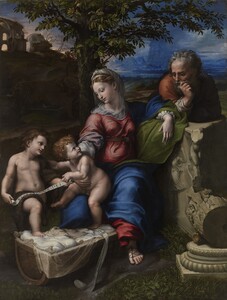Netherlandish school, circa 1535
The Holy Family with a parrot
Oil on panel : 79 X 118,5 cm
Unsigned
Sold at Dorotheum Vienna, 18/10/16
For 377.253 €
According to the RKD by a follower of Jan van Scorel, possibly Maerten van Heemskerck or Lambert Sustris or Herman Posthumus
This is a comparative item
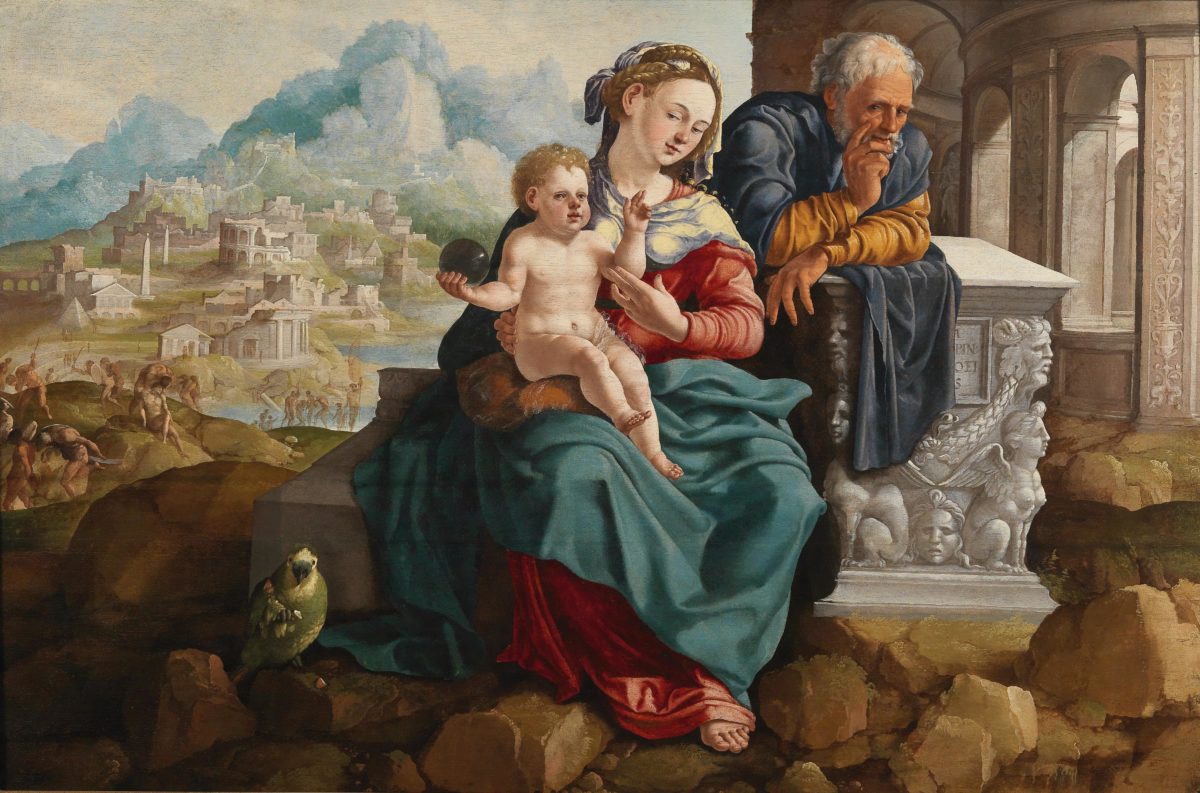
Painting for Sale
Comparative paintings
Click photos for more details

